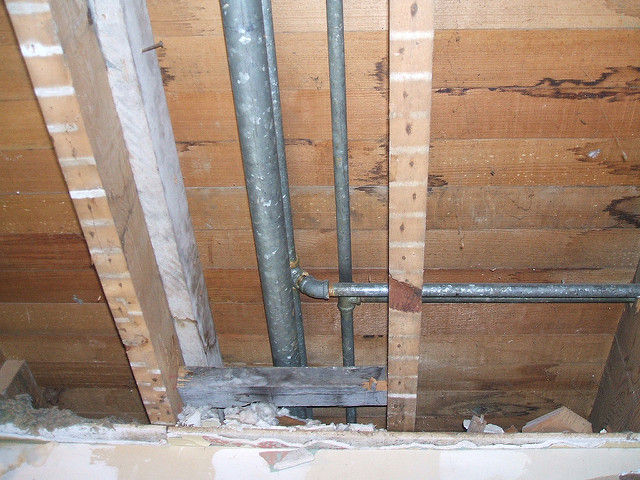Exactly how to Inspect If Your House Has a Covert Leak
Exactly how to Inspect If Your House Has a Covert Leak
Blog Article
The article listed below about Hacks to detect leaks is especially fascinating. Check it out for yourself and see what you think of it.
.jpg)
Early discovery of leaking water lines can mitigate a possible catastrophe. Some tiny water leakages may not be visible.
1. Analyze the Water Meter
Every house has a water meter. Checking it is a proven way that assists you discover leaks. For beginners, turn off all the water resources. Guarantee no one will certainly flush, utilize the tap, shower, run the washing equipment or dishwashing machine. From there, most likely to the meter and watch if it will certainly change. Because no person is utilizing it, there ought to be no activities. That suggests a fast-moving leak if it relocates. Likewise, if you identify no changes, wait an hour or 2 and inspect back once more. This implies you might have a sluggish leakage that might even be underground.
2. Check Water Usage
Evaluate your water bills and track your water consumption. As the one paying it, you need to see if there are any type of discrepancies. If you identify sudden changes, despite your intake coinciding, it suggests that you have leaks in your plumbing system. Bear in mind, your water expense need to drop under the exact same variety on a monthly basis. An abrupt spike in your expense shows a fast-moving leak.
A constant boost every month, even with the exact same habits, reveals you have a slow-moving leakage that's also gradually intensifying. Call a plumber to extensively check your residential or commercial property, specifically if you really feel a warm area on your floor with piping underneath.
3. Do a Food Coloring Examination
When it comes to water consumption, 30% comes from commodes. If the shade somehow infiltrates your bowl during that time without flushing, there's a leak between the container and also bowl.
4. Asses Outside Lines
Do not fail to remember to check your outdoor water lines also. Ought to water seep out of the link, you have a loosened rubber gasket. One little leakage can lose heaps of water and also spike your water bill.
5. Evaluate the scenario and examine
Home owners should make it a practice to examine under the sink counters as well as also inside cabinets for any type of bad odor or mold and mildew growth. These two red flags show a leak so punctual interest is called for. Doing routine evaluations, even bi-annually, can save you from a significant issue.
If you know your house is currently old, keep a watchful eye on your heating units, hoses, pipes etc. Look for stainings and also damaging as many devices as well as pipes have a life span. They will certainly also naturally deteriorate as a result of wear and tear. If you presume dripping water lines in your plumbing system, do not wait for it to rise. Call a professional plumber immediately so you don't wind up with a dreadful mess in your home.
Early detection of dripping water lines can minimize a possible calamity. Some little water leaks may not be noticeable. Inspecting it is a proven way that helps you discover leakages. One tiny leakage can waste lots of water and increase your water expense.
If you presume dripping water lines in your plumbing system, don't wait for it to intensify.
WARNING SIGNS OF WATER LEAKAGE BEHIND THE WALL
PERSISTENT MUSTY ODORS
As water slowly drips from a leaky pipe inside the wall, flooring and sheetrock stay damp and develop an odor similar to wet cardboard. It generates a musty smell that can help you find hidden leaks.
MOLD IN UNUSUAL AREAS
Mold usually grows in wet areas like kitchens, baths and laundry rooms. If you spot the stuff on walls or baseboards in other rooms of the house, it’s a good indicator of undetected water leaks.
STAINS THAT GROW
When mold thrives around a leaky pipe, it sometimes takes hold on the inside surface of the affected wall. A growing stain on otherwise clean sheetrock is often your sign of a hidden plumbing problem.
PEELING OR BUBBLING WALLPAPER / PAINT
This clue is easy to miss in rooms that don’t get much use. When you see wallpaper separating along seams or paint bubbling or flaking off the wall, blame sheetrock that stays wet because of an undetected leak.
BUCKLED CEILINGS AND STAINED FLOORS
If ceilings or floors in bathrooms, kitchens or laundry areas develop structural problems, don’t rule out constant damp inside the walls. Wet sheetrock can affect adjacent framing, flooring and ceilings.
https://www.servicemasterbyzaba.com/blog/how-to-detect-water-leakage-in-walls/

Do you appreciate more info about Finding hidden leaks? Place a remark further down. We would be interested to see your opinions about this post. In hopes that you visit us again in the near future. Sharing is nice. One never knows, you may just be helping someone out. I treasure reading our article about Finding hidden leaks.
Report this page